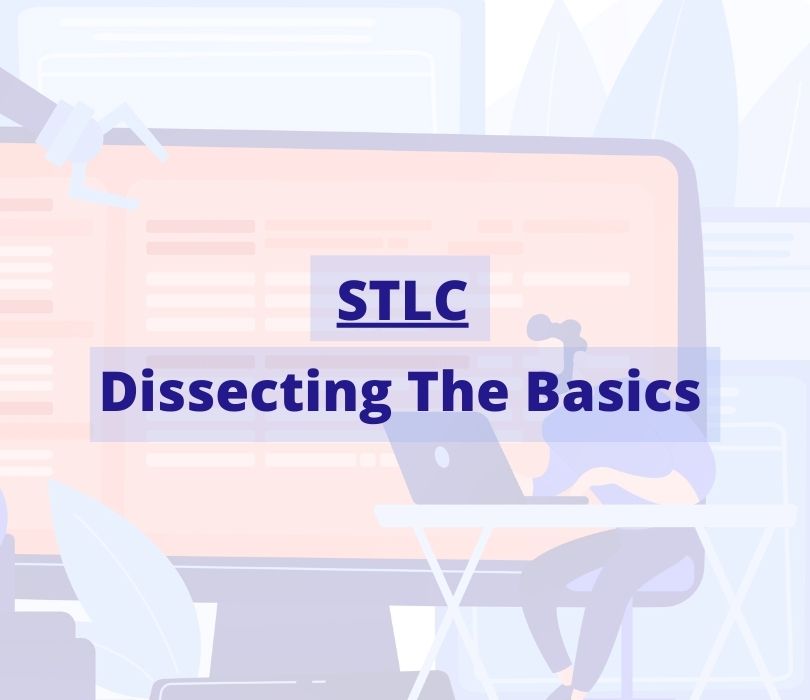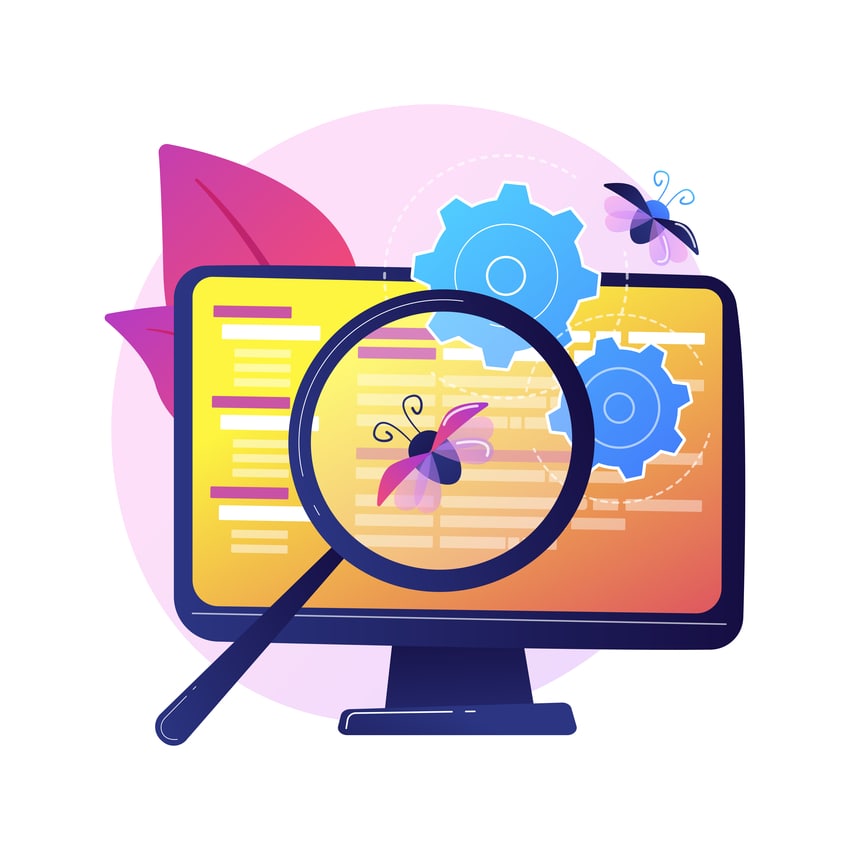What is the Software Testing Life Cycle? How important it is?
Whether you are a developer or you simply want to gain an appreciation for how modern apps and services are put through their paces, getting to grips with the software testing life cycle (STLC) is sensible.
On the surface it sounds simple enough; you establish a series of testing procedures and organize them logically, with the goal being to improve the quality of the end product.
Of course, if you dig a little deeper, things can get complex quite quickly. So, to avoid the topic of STLC becoming overwhelming, let’s explore the steps involved and the purpose of each to bring you up to speed.
Dissecting The Basics
STLC is part of the wider software development life cycle (SDLC), although as you’d expect it is far more focused in nature, and is contained within the broader umbrella of this all-encompassing process.
Another point to make is that you can either handle testing in-house, or outsource it to a third party testing provider like Applause. There are plenty of Applause competitors which provide you with the tools to control testing internally while implementing automation to minimize the burden on your own quality assurance (QA) team, so there’s plenty of flexibility here.
The overarching intent of testing is to highlight issues with the software and feed this info back to the developers so that fixes can be found.
This process is called a cycle because while it has a distinct start and end point, the steps contained within are typically repeated time after time, with each new variation of the software being scrutinized just as closely as the last.
Even small changes and updates have to be analyzed, or else major flaws could go unnoticed and end users might be the first to encounter them, which will harm the reputation of the software, the developer and the publisher alike.
In the case that the software is being built for internal use, then problems with productivity and even data loss can be avoided through rigorous, regimented and repeatable testing. Thus the role of STLC cannot be understated in this context.
Unveiling The Stages
STLC strategies can vary in terms of the number of stages and what each involves, with different teams coming up with their own approaches. However, generally speaking there are six accepted, distinct steps at play, so let’s look at what each involves.
Requirement analysis
Basically, you need to know what you’re testing based on what a piece of software is designed to do in the hands of end users.
That might mean looking at the features of an app and finding out the intended functionality from the development team, so you can check to see if this lives up to expectations. It could also involve establishing what limitations are placed on what users can do and testing for these so-called non-functional aspects as well.
During the requirement analysis stage, there will be a lot of communication between developers and the QA testers. This is also the point at which decisions can be made with regards to what aspects of the testing can be automated, if any.
Certain parts of requirement analysis are set in stone across almost all STLC strategies; for example, user interface (UI) elements like menu buttons and text fields have to be assessed for functionality. However, a purely boilerplate approach will not work out well because of the unique requirements of each app, so the aforementioned collaboration across departments is crucial.
Do you need help with software testing?
Test planning
With the analysis of the requirements of testing complete, the time to plot out the framework of the testing to come has arrived.
This involves identifying the goals, as well as the scale of the testing required to reach them. From here, it’s possible to set a schedule within which the objectives can reasonably be achieved, along with the tools that will be harnessed for this purpose, and the team members who will take up particular roles going forward. If additional training is required, then this must also be encompassed.
These elements and many more project-specific considerations will be laid down in the test plan document, which becomes the road map for the STLC strategy.
Throughout the SDLC, as well as in the testing phase, thorough and unambiguous documentation like this will make a big difference. It’s not only relevant to the success of a single testing scheme, but also to future testing, as it helps establish best practices, as well as making it easier to detect deficiencies and remedy them further down the line.
Test case development
Test cases are created to focus on particular parts of a software package that you want to analyze. A typical test case will contain within it the details of the inputs involved, the procedures to follow, the conditions under which testing will take place, and the ideal results that should be seen.
For example, if a button is pressed from the main menu of an app, a test case would look to see that it fulfills its intended function of taking the user through to the associated sub-menu or screen.
A whole host of test cases are needed to check the quality of a proposed software version ahead of release, and every testable aspect has to be checked, using both manual and automated methods where appropriate.
In the case that automation is applicable to a test case, the development stage here is when QA team members can put together the scripting for this. Modern testing tools make this easy, and there are both low code and no code testing platforms out there that do not require comprehensive technical or programming knowledge to create automated tests from scratch.
Test environment setup
Again, there are a lot of variables at play in terms of how you determine the test environment setup to use. But the overarching aim here is to ensure that you are encompassing as many different hardware and software configurations within the parameters of your testing to ensure the app will perform as intended for a diverse user base.
Let’s say you’re making a business website with integrated apps that run in-browser. You’ll need to build test environments around the browsers you’re targeting, which generally includes mainstream options like Chrome, Edge and Safari. You’ll also have to factor in things like different RAM allocations, different CPU core counts and threads, different GPU capabilities and so on.
It’s no good having software that runs great on one user’s device, but chugs along on another. Knowing the minimum requirements you are targeting also helps here; your software might be aiming for the lowest common denominator, or it might make the assumption that users will have a higher base level of hardware at their disposal.
This is also where test environment prioritization is key. You will want to aim to test the environments in which the majority of users will run the software first and most thoroughly. If you don’t know where this segment sits, researching environments is necessary.
Now is the time to apply the software testing life cycle.
Test execution
When you reach this point in the STLC, you are ready for putting the test cases you created into action, with QA team members following the documented plan and the agreed upon priorities to play their part in this process.
As each test is run, expected outcomes are compared with what actually happened, and inconsistencies are logged, flagged and fed back to developers. Bugs which are identified and subsequently patched must also be tested once again, because changes which ameliorate an issue in one area might cause a different problem to crop up elsewhere.
Test closure
When the STLC comes to an end, reporting can begin. The key to effective test closure is attention to detail, not only in terms of what happened in each test case itself, but also with regards to things like the timeline of testing, the costs incurred, and the extent of the individual elements of a software package which were put under the microscope.
Properly handled, test closure can give you actionable insights on the procedures and processes used, as well as allowing you to better communicate your findings to developers, and demonstrate the impact that QA has to decision-makers and those in other departments as well.
The Bottom Line on STLC (Software Testing Life Cycle)
Whether you want to start a software company, you’re working at one or you’re working with one, it should be no surprise that in software testing, there are many moving parts and a lot to understand when you are a newcomer.
However, with time and experience it is more than possible to master this art and implement it successfully for all sorts of development projects. Of course, it’s better to treat software testing as a science, even if some of the bugs and flaws you encounter seem to be conjured out of thin air.
A great idea for an app can’t just rely on good marketing to fly. It needs testing to reach its true potential, or else it could be scuppered by bugs or hampered by compatibility issues. STLC strategies which are built with this in mind can make the biggest difference.
Growth Hackers is a full-service SaaS content marketing agency helping businesses from all over the world grow. There is no fluff with Growth Hackers. We help entrepreneurs and business owners maximize the software testing life cycle, generate qualified leads, optimize their conversion rate, gather and analyze data analytics, acquire and retain users and increase sales. We go further than brand awareness and exposure. We make sure that the strategies we implement move the needle so your business grow, strive and succeed. If you too want your business to reach new heights, contact Growth Hackers today so we can discuss about your brand and create a custom growth plan for you. You’re just one click away to skyrocket your business.







